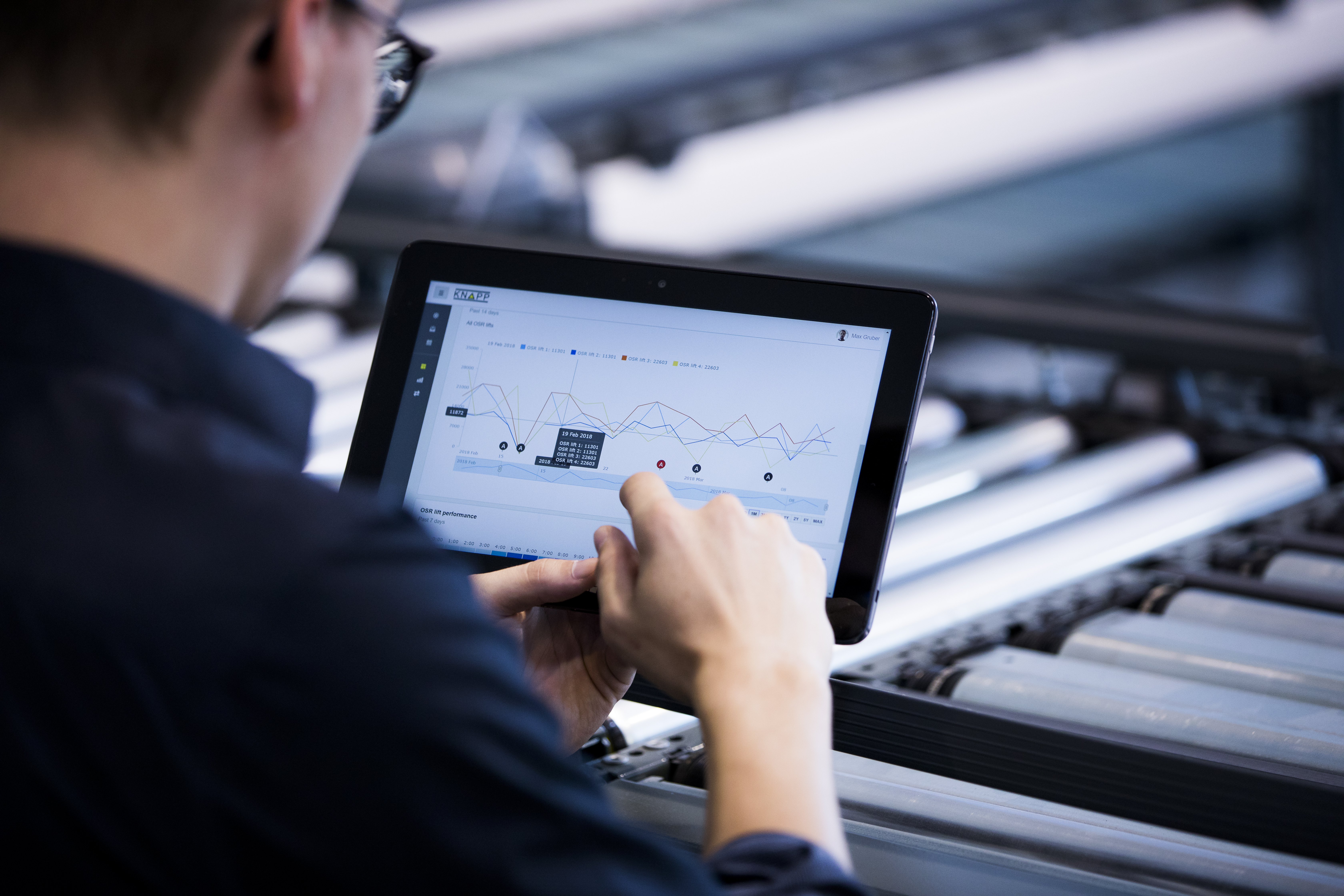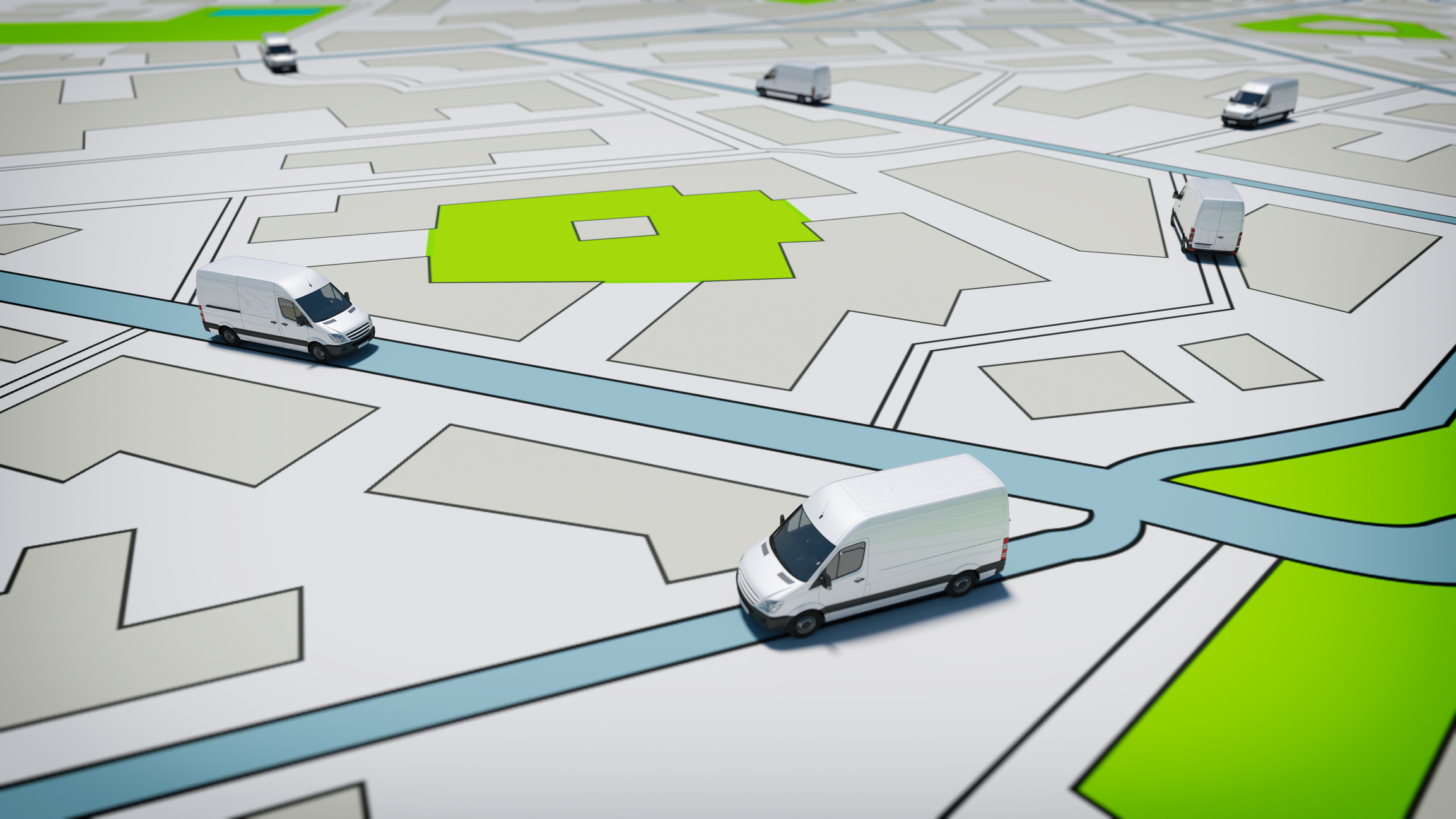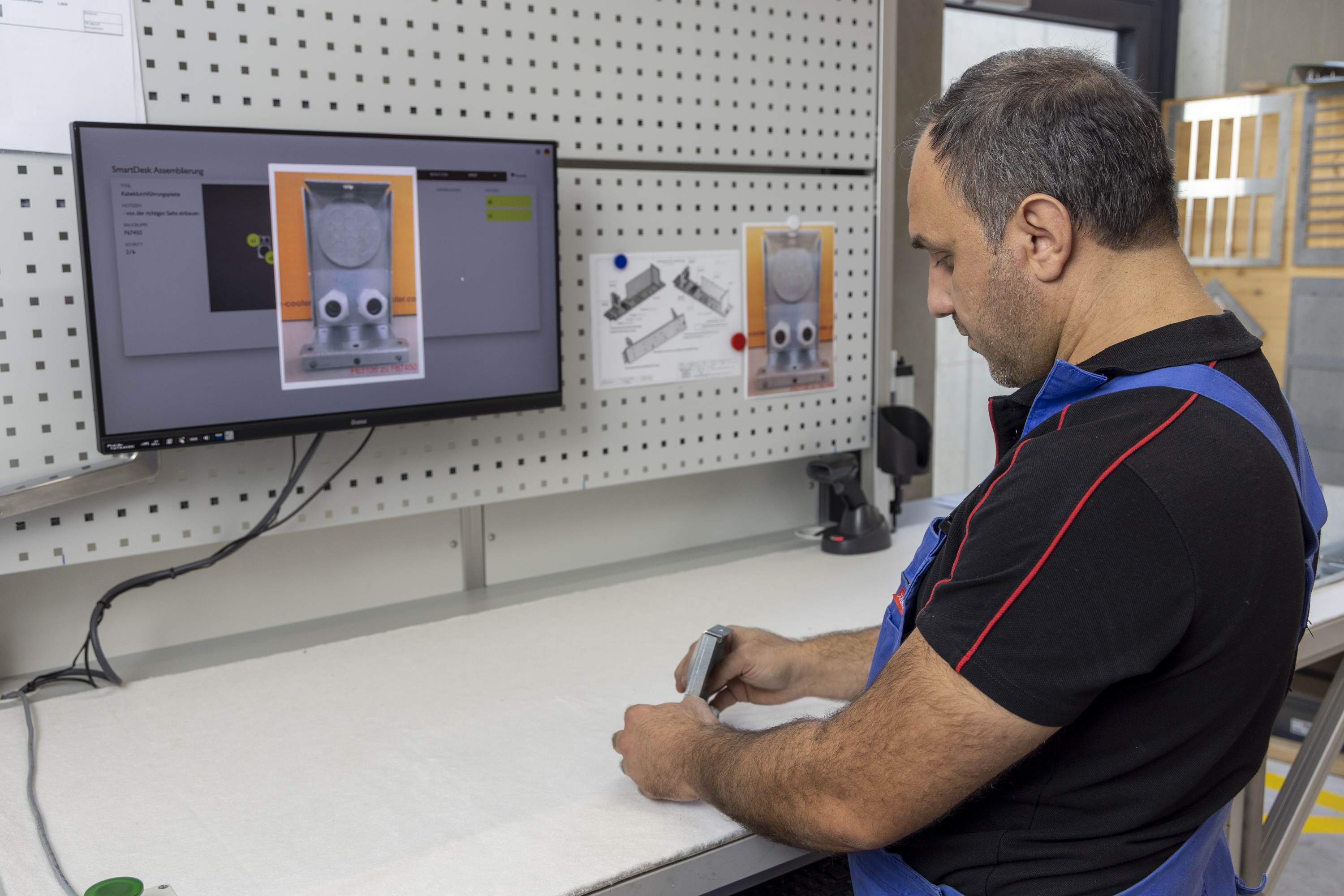Sustainability, digitalization and automation. These terms are the big three of the modern value chain. Whether in production, warehouse management, in transport or on the last mile to the customer, many processes are already much more efficient and transparent thanks to automation and digitalization in the supply chain. But does this make them more environmentally sustainable? Individual software solutions can address sustainability, but they alone cannot reduce environmental impacts over the long term. In this post, we show you not just a few examples of sustainability through digitalization, but also how these solutions interact to provide end-to-end sustainable logistics.
Sustainable logistics: The status quo
Think back to your last online order. Did you wonder why the package was double the size of the product you ordered? Or whether you could use some of the filling material to craft something useful? It’s an important question because packaging and shipping have a huge influence on the CO2 footprint of an order.
Sustainability in logistics may not be a new idea, but it has become an influential megatrend over the past years. Stricter requirements and environmentally conscientious consumers are forcing companies to focus on more sustainability. However, implementation thus far been focused on the most obvious factor that impacts the environment: transport. The switch to electric or hybrid fleets is in full swing at many companies, as is the implementation of digital tools that optimize transport loads and routes.
Developing more environmentally friendly transport is a great start, but it cannot create an end-to-end sustainable value chain on its own. The digital transformation, which is also a great opportunity for companies, comes into play as well.
But where do we currently stand with sustainable logistics? What challenges are you confronted with when you want to make your value chain more sustainable? Let’s dive in.
A reality check: What digital and sustainable logistics solutions are already being used?
- Artificial intelligence and advanced analytics provide illuminating real-time analyses that provide a superior basis for decision making.
- Route optimization software finds the shortest, most efficient route, saving resources during delivery.
- Tools for fully automatic picking and packing goods as well as dynamic transport planning get orders ready in the perfect sequence and at the perfect time at the loading ramp.
- Apps for drivers as a simple tool for flexible order fulfillment
- Track and trace systems for end-to-end tracking of lots or serial numbers
- Efficient, digital shift schedules help you plan human resources optimally.
- Predictive maintenance: Data analyses are ideal for planning maintenance predictively and proactively based on real-time monitoring.
What challenges are coming with digitalization?
Why the digitalization of the value chain is essential
An important enabler of this is the digitalization of logistics. It holds the key to the raw material of the future, which is data. The collection, preparation and analysis of data are needed to implement the right measures for sustainability in logistics. In this way, the change from a reactive approach to a proactive design and structural optimization of all processes can be successful.
Digitalization and sustainability, with respect to innovative technological developments, are closely connected. The more quality information a company can get through digital technologies about the functioning of its products, systems or services, the easier it becomes to optimize them and to keep them moving in the right direction. Technologies help conserve resources, monitor risks and determine what is really needed. Companies save costs and become more efficient, as well as more sustainable.
It’s important not to rely on separate software solutions. Instead, a holistic approach to a digital strategy for the entire value chain is called for. This is the only way to link multiple technological enablers with each other, to generate various different types of data and truly implement the full potential of sustainable logistics. Those who can successfully adapt their sustainability initiatives, accelerate them and integrate them into approaches for innovation are setting the course for sustainable global supply chains – and thereby also gain a clear competitive advantage.
Digitalization for more sustainability: Approaches
What are specific examples of how digital solutions are used sustainably in logistics companies? Here is an overview:
Warehouse management system: Foundational to sustainability through digitalization
First things first: Sustainability through digitalization in logistics is only possible with a warehouse management system (WMS). The higher-level software is in many aspects like the central nervous system of a warehouse. The WMS connects directly to both the higher-level ERP system and to all the subordinate software solutions, including the essential warehouse control system (WCS). Together with the WMS, these systems form the dream team for more efficiency, transparency and sustainability in the warehouse.
Each software solution has its own clear area of functions. The WMS plans, monitors and optimizes all the processes from goods-in to shipping in real time. The WCS is the direct interface to the underlying machine control and controls the technologies in the warehouse in real time. The systems work in tandem to steer and optimize all movements of goods, intelligently control replenishment, identify any weak points, increase transparency and help in flexible planning. This efficient management results in advantages that form the basis for a more sustainable logistics:
Data analytics for better decision making

Thanks to digitalization, a multitude of data is available. Every sensor, every machine and every human produce large amounts of data every second. But what do you do with all this data? There are many possibilities:
You can also use this data to make better decisions. It will increase your potential for optimization, which translates to lower costs, higher profit margins and a more cost-efficient, environmentally friendly operation. Intelligent analysis tools help you analyze this data. You need this type of tool to help you navigate the data jungle and to stay on top of things. It then becomes easier to make the right decisions at the right time, respond to changes, and make full use of your company’s potential.
Data analyses are also important to predictively and proactively conduct maintenance based on real-time observations. Using real-time data from intelligent sensors, you can predict failures based on historical trends. Companies using data analysis tools have the opportunity to better plan their maintenance work, which significantly reduces call-out services to the site and saves costs because spare parts are not replaced according to the maintenance plan but to their actual condition. Using digital solutions saves time and resources over the long term.
Optimal resource allocation improves working conditions

How can you get qualified people excited about your company? How do you equip your operations to meet the demands of the new generation of employees? How are you dealing with demographic change? These are the questions that logistics companies are asking themselves now more than ever. The good news is that you can shine as an attractive employer even in challenging times like these. Innovation, flexibility and recognition are just some of the values gaining importance, especially with regards to social sustainability. Digital tools give footing to these values in the work day, providing value for the employees and company alike.
Digital tools for a modern image
Studies prove that life-long learning and trying new technologies are not just popular with the younger generations. Even older adults value innovative technologies in their workplace and associate them with a modern corporate culture.
Smartphone apps are especially popular with all ages. The obvious choice for designing and organizing work processes is relying on a convenient app. For example, shift schedules can be generated and posted right on your mobile phone, and employees can request and plan their vacation days right on their phones. This type of app provides more autonomy and flexibility in work scheduling.
Flexibility is the key to satisfaction
According to studies, flexibility is even more important than pay – for both recruitment and employee retention. These requirements are covered by offering flexible shift models, shorter work weeks or more varied assignments. But this begs the question: How can you reconcile flexibility with the quantity of orders that must be processed at any given time? Again, smart apps come into play: The employees enter the times they want to work in the app. Smart tools compare this information with the company’s order data and an appropriate shift schedule is automatically generated. This is how smart apps make personnel planning more efficient.
Digital tools can support human beings in the industrial setting, but not replace them. The race for the best talents will go to those companies who respond the fastest to the new job market. Smartphone apps, new technologies and intelligent software are one way to help make the logistics work environment more attractive and sustainable.
Intelligent packing lowers CO2 emissions

You’ve seen it before: You place an order online and it arrives in a box that is far too big and stuffed to the brim with filling material to boot. What a waste! This not only produces a lot of waste but also wastes valuable space on delivery trucks by transporting air.
The conventional approach to picking and packaging products is straightforward: Products are packed into pre-made cartons and the extra space filled with filling material. The right-size packaging concept eliminates this wasteful process, but how does it work?
When an order is received, a software calculates how large the shipping carton has to be to pack all of its items space-effectively. This carton is then made at a packing machine, tailored to the size of the goods in the order.
Small cartons, big results
By using right-size packaging, you can cut your carton waste in half and reduce the use of filling material by a third. Less carton also saves on transport as well as personnel costs.
An international sports fashion retailer who ships around 6.2 million cartons per year reports similar results:
30 %
reduction in void fill
45 %
reduction in shipping volume
31 %
less CO2
< 3
years ROI
30 %
reduction in packaging weight
5.717 km
(3,552 miles) adhesive tape saved
This could save up to 500 tons of CO2 annually simply by reducing the amount of material used. Right-sized packaging additionally reduces the carbon footprint through the optimal loading of trucks.
Customized packaging has many benefits. It provides economic advantages by reducing packaging and filling material as well as transport costs. It also improves customers’ unboxing experience. But most of all, it benefits the environment. Resources are used more sustainably; transportation space is optimized and there is an overall reduction in CO2 emissions.
Digital twin conserves resources in planning and during incidents

What is a digital twin? “The virtual image of a real object that represents its characteristics and behavior.” Granted, the definition of a digital twin is not too exciting at first glance. But if we truly understand what this definition means, extremely promising and above all sustainable perspectives open up for logistics.
For example, digital twins are used in preparing system startups. The digital twin is automatically generated from the data in the engineering management system. Functions and processes are run through test simulations, revealing many errors during project preparation.
That’s not all. A digital twin can help to ensure that the right parts are manufactured and reduce troubleshooting during startup, which also reduces the time the technicians work. Furthermore, all the processes are documented, preserving valuable knowledge.
After startup has been completed, the digital twin continues to facilitate troubleshooting and is particularly useful when the real system data differs from the simulation data. It provides results quickly and helps rectify errors.
How is a digital twin created?
Data is captured
A virtual model is generated
Situations are simulated and analyzed
Processes are monitored and correction measures optimized.
Digital twins are already supporting employees in their everyday work and helping to drastically reduce the time spent troubleshooting. Naturally, these simulations and analyses also help to mitigate resource consumption.
Transport management

How will you optimize your warehouse? Where will you start? Where will you finish? For many companies, planning is completed at the loading dock. But the growth of online retail and e-commerce has thrust extralogistics – logistics processes that take place outside the warehouse – into the spotlight. It’s an important shift in perspective, as delivery accounts for up to 75 percent of logistics costs per item.
Extralogistics differentiates between static and dynamic planning models. Traditional static models involve the creation of a set plan for the upcoming days that is then simply worked through. But e-commerce and the new associated business models, in particular same-day and next-day delivery, are driving a shift toward demand-oriented dynamic planning models. Trips and routes are planned with little advance notice to keep processing times to a minimum. It may sound strange to you, but dynamic planning means that your routes for tomorrow still aren’t set in stone today – and that’s a good thing.
More flexibility for the last mile
Digital planning tools allow you to plan your shipping orders dynamically. A planning software plans the transport orders in the warehouse, and an app, a simple tool, is used by delivery personnel to complete the orders on the last mile.
What does such a dynamic planning process look like, exactly?
- The software begins working as soon as an order is received: It checks the delivery address and assigns it to a geographic region.
- Then the optimization process begins: The software defines when which order must be at which location in the warehouse in order to meet the defined delivery window.
- The result: Perfectly sequenced orders arriving at the loading ramp at the right time.
Planning, however, is not finished at the loading dock. The software uses live traffic data to sequence the deliveries. It optimizes delivery based on three criteria:
- Which truck is transporting which order on which route?
- When is the delivery timeslot?
- How can the timeslot be met with the shortest distance and with the truck as full as possible?
The result is lower CO2 emissions thanks to shorter distances, fewer empty miles and fewer trucks on the streets.
Image recognition technologies prevent errors

Production and supply chain problems are diverse, elusive and sometimes hard to define. At the same time, one small irregularity can have far-reaching effects. Manually monitoring and correcting work steps is expensive, time-consuming and not always possible. Digital image recognition technologies help find errors in various areas of work. They reduce errors that have to be corrected, complaints, keep costs down and increase customer satisfaction over the long term.
I see something you don’t – in all areas of the warehouse
Intelligent, digital camera systems help you to ensure and record the condition of your items in goods-in. Artificial intelligence recognizes incorrectly delivered or damaged goods independently.
Another core function of image recognition tools is to identify errors in parts production. The cameras detect the smallest deviations that remain hidden even to the human eye, a huge element in a zero-defect strategy.
Smart work stations can check manual work steps digitally and provide employees with visual feedback in real time. The quality of the feedback also improves automatically by training the neural network: A few photos of the desired condition or faulty condition are all that’s needed. The deep learning network can learn, based on the differences, and then apply this knowledge in the future. The system is able to provide increasingly precise instructions and feedback.
Conclusion
Are you interested in talking to logistics experts from your industry about digitalization and the opportunities it creates for sustainability? Drop us a line. We would be happy to assist you and your business!
Further reading recommendations

Sustainable packaging can secure key benefits that help you to build or maintain competitive advantage. The key to unlocking these gains within your logistics operation is the integration of automation into your packaging process.

In logistics, the last mile frequently includes many hurdles to jump that require significant resources. Perfect planning and flexibility can make the difference between success and falling flat. And environmental sustainability is becoming more important in the home stretch of the value chain, too. In our blog post, we share four strategies for more sustainability in food logistics.

In logistics, sustainability is an omnipresent topic. We would like to show you 4 good reasons why it makes sense to protect the environment, work efficiently and benefit from the many positive effects. Find out more!
